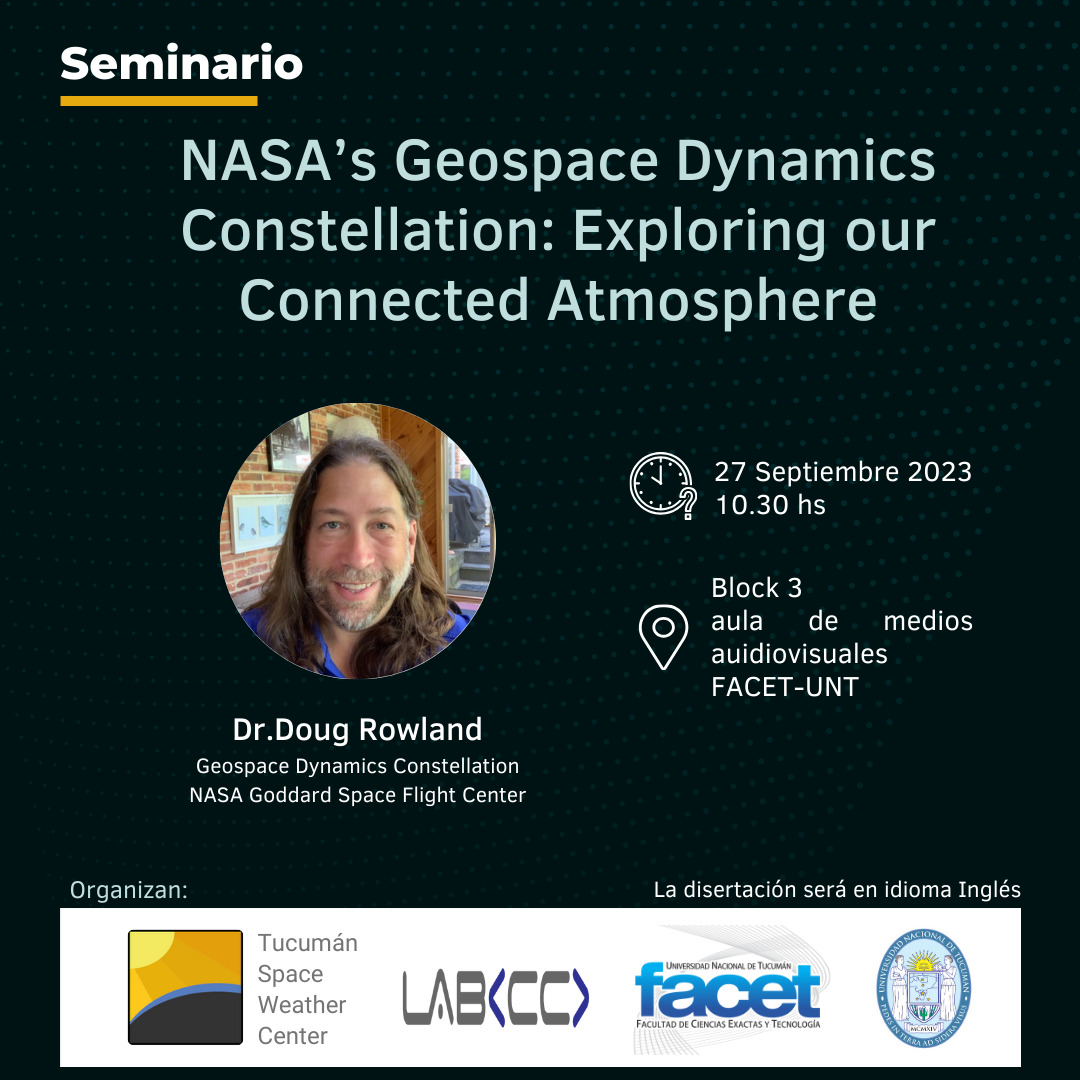Se invita a los interesados a participar del seminario “NASA’s Geospace Dynamics Constellation: Exploring our Connected Atmosphere”, que se llevará a cabo el miércoles 27 septiembre, a las 10:30 hs, en la Sala de Medios Audiovisuales, Block 3, 1er Piso, FACET-UNT. El mismo estará a cargo del Dr. Doug Rowland, de NASA Goddard Space Flight Center.
La disertación será en idioma Inglés.
The world relies on satellites in low earth orbit (LEO) for a wide range of commercial, civil space, and defense applications. Though LEO was one of the first space environments studied from the dawn of the space age, increased usage of this region has highlighted large gaps in our understanding and predictive capability. For example, following a SpaceX launch of 49 Starlink satellites in February 2022, 38 of those satellites were lost to unexpectedly high atmospheric drag that ultimately caused them to deorbit. In this region, Earth’s atmophere extends to form a tenuous envelope of electrically neutral gas called the thermosphere, and its electrically conductive counterpart, the ionosphere. These two layers of the upper atmosphere coexist over the same altitude range, and this has dramatic consequences for the variability of the LEO space environment. The coupled plasma-gas system responds to electrodynamic, dynamical, and chemical/photochemical forcing, at a range of spatial scales from sub-kilometer to global and time scales from seconds to decades.
NASA plans to develop the Geospace Dynamics Constellation (GDC), a mission within the Heliophysics Living With a Star Program, as a strategic mission that will directly probe the causes of variability in the ionosphere/thermosphere, leading ultimately to a better understanding and predictive capability for the variability in this region. GDC consists of six identical spacecraft, equipped with instrumentation to measure all aspects of the local space environment, including the properties of the ionosphere and thermosphere and the electric and magnetic fields and energetic charged particles that serve as major energy inputs. GDC’s satellites will orbit near 350-400 km altitude, at high inclination, to provide the first-ever comprehensive, global view of the LEO space environment’s variability and the casuses of that variability, on all critical spatiotemporal scales. GDC is currently in formulation, with launch anticipated in the first part of the next decade. In this talk, I will present GDC’s science motivation, planned measurement and sampling strategy.

